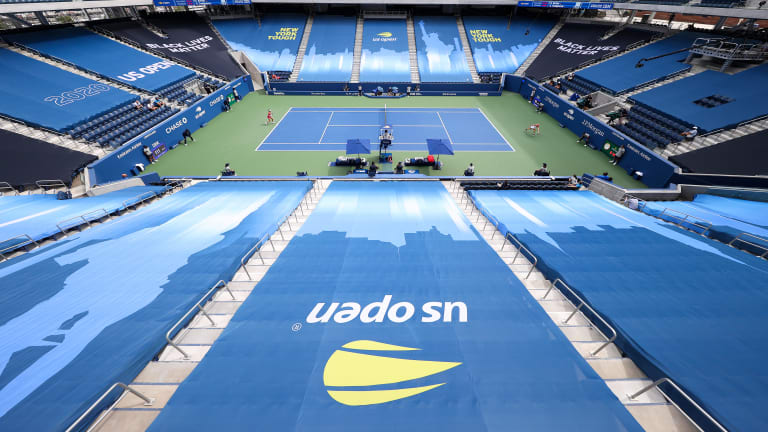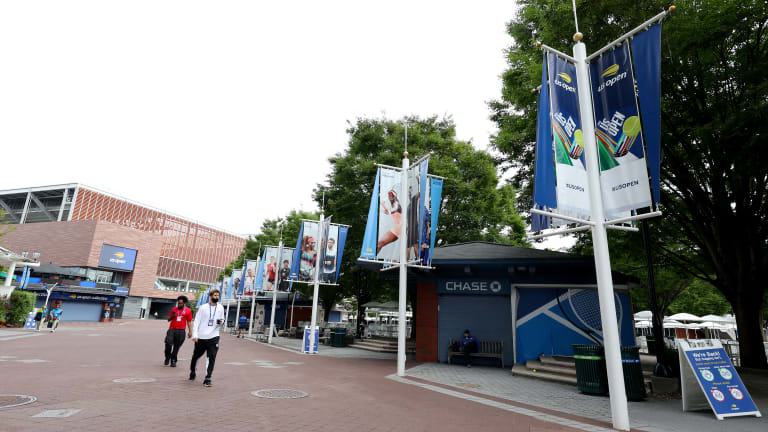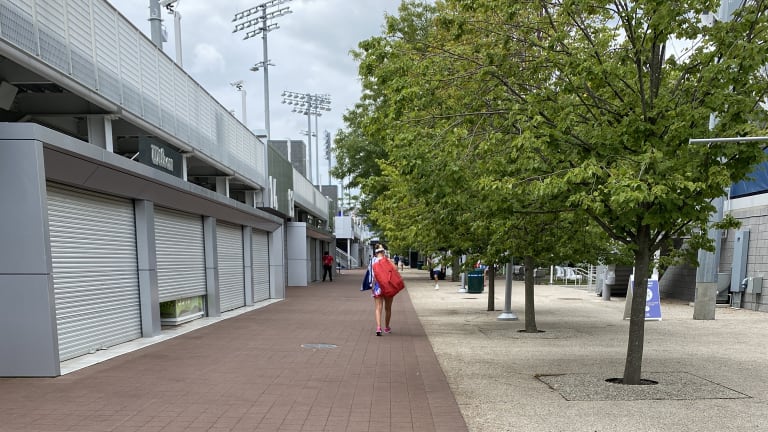US Open
A vast feeling of emptiness: What it's like at a nondescript US Open
By Aug 31, 2020US Open
Sinner, Swiatek, Alcaraz, Venus, Djokovic among confirmed US Open mixed doubles competitors
By Jul 29, 2025US Open
Wheelchair tennis returns to US Open after break for 2024 Paralympic Games
By Jul 25, 2025US Open
Mixed doubles madness! Venus enters US Open with Opelka, Swiatek boosts bid with Ruud
By Jul 21, 2025US Open
Aryna Sabalenka: Grigor Dimitrov “begged” me to play US Open mixed doubles
By Jun 19, 2025US Open
US Open breathes new life into mixed doubles format with Fan Week revamp
By Jun 18, 2025US Open
Carlos Alcaraz-Emma Raducanu among top tier US Open mixed doubles pairs
By Jun 17, 2025US Open
US Open revamps mixed doubles format, adds $1 million prize to incentivize "biggest names in the sport"
By Feb 11, 2025US Open
US Open adds a 15th day, moves to Sunday start in 2025
By Jan 29, 2025US Open
Post-2024 US Open WTA storylines: The Age of Aryna; what's next for Swiatek and Gauff?
By Sep 09, 2024A vast feeling of emptiness: What it's like at a nondescript US Open
Some scenes from Queens, where a most unusual Grand Slam tournament is underway.
Published Aug 31, 2020
Advertising

A vast feeling of emptiness: What it's like at a nondescript US Open
© Getty Images
Advertising

A vast feeling of emptiness: What it's like at a nondescript US Open
© Getty Images
Advertising

A vast feeling of emptiness: What it's like at a nondescript US Open
Advertising

A vast feeling of emptiness: What it's like at a nondescript US Open